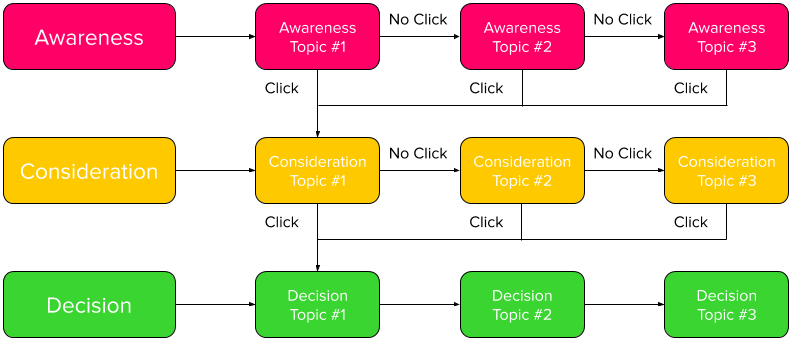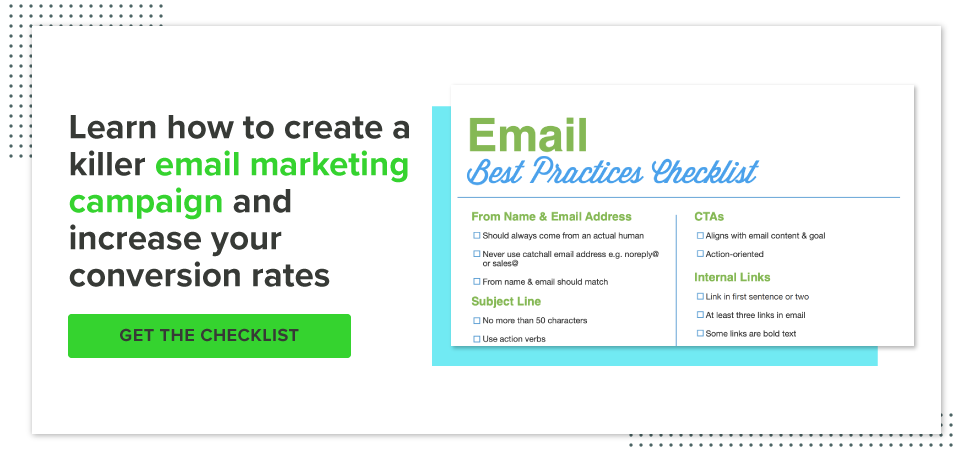How to Optimize Your Email Campaign Based on Your Customers' Behavior
We live in an online world. We are always plugged in. Our brains are always on. We’re constantly absorbing information that we find online. Some of us may even fall asleep, smartphones in hand, perhaps mid-email.
As consumers, our behavior has changed. Not only have our conversations moved online, but how we conduct business has evolved, and our buying process has almost entirely migrated to the digital space. As companies, we need to capitalize on this transition and engage with customers where they are most active: online.
Email Marketing
Email Marketing has become an integral part of the marketing mix for many B2B companies. Even while other communication tools like live chat gain popularity, email is still a major channel for marketing communications, and it’s here to stay.
Knowing that, it’s important to analyze the effectiveness of your email campaign. Are you getting the response you are looking for? Are you meeting your goals? How are users interacting with your content? Are you converting these leads into customers?
If you can’t answer some of those questions, it may be time to reexamine your email strategy. And we're here to show you how you can optimize your email campaign to drive results for your company.
Behavior Based Email Marketing
A behavior based email campaign is dependent on how your leads engage with the content. Not only are the opens and click rates tracked, but this type of campaign serves up different email content depending on how your lead responds.
In addition to varying the emails sent based on the lead’s behavior, use the past behavior of customers who have converted and closed to inform your email strategy. Instead of hypothesizing what might resonate with leads, look at what did resonate with your customers. Identify what content your customers interacted with at specific stages in their buyer’s journey and serve that to your leads when they reach those stages.
- Awareness: Start by grabbing the lead’s attention and making them aware of your brand and business. This series of emails contains general information, perhaps a company or product overview, and provides value for the lead in some way, maybe with an educational content offer. We want to give them just a glimpse, enticing them to take action and continue moving through the funnel.
- Consideration: Next, you move into the consideration phase. Think of this as the point where your lead is now “considering” engaging with your company or product. Here you want to provide them with information that will make the decision easier.
- Decision: The final stage is decision. Here your lead is on the verge of purchase, but they still have some anxiety around making the commitment. At this stage, your communications should focus on building trust and differentiating yourself from any other competitors they’re still considering. These emails can include content around ranging from pricing to testimonials to “What to Expect When You Buy.”
Now that you understand the different stages, it’s time to start developing the outline for your campaign. Prior to starting the copywriting process, map out how each email topic will align with the buyer’s journey stage it’s targeting and relate to the emails before and after it.
To ensure your campaign can actually change depending on the lead’s behavior, you need to have multiple emails for each stage.

This diagram shows you how emails will be sent based on the lead’s actions. The email campaign starts in the awareness phase, and your customer will move through the rest of the emails based on how they interact with your content. For example, if they open and click on the first email that was sent, they will be funneled into the consideration email set. If they opt not to convert on the first email, then they will receive the second awareness email.
For many of us, burning an audience can be of a concern. Fortunately with this type of strategy, the customers who do not have any interaction with your content will not progress to the next stage or receive any additional emails.
How to Determine Customer Behavior
To gain insight from your customer’s past behavior, you need to have a way to track that behavior and collect feedback on the effectivity of your marketing efforts. To collect this data, you can use:
- Touchpoint tracking
- Closed-won surveys
- Campaign analytics
- Direct customer feedback
- Reviews
If you’re starting from scratch, you won’t have a past email campaigns to analyze. In that case, look at how your content offers are performing instead. Identify the pieces of content that prospects who became customers interacted with the most. This can include blog posts, premium content offers, videos, case studies, testimonials, etc.
Once you’ve identified which content offers are interacted with the most, map out how those offers fall into the buyer’s journey and build your email campaign around that.
After running your email campaign for a few months, look at how it’s performing and how the conversion path you based it on compares to the conversion paths of more recent customers. Replace older content offers with more recent creations that have been performing better and optimize the email campaign over time.
This post was originally published August 23, 2012
Quinn Kanner
Quinn is a writer and copyeditor whose work ranges from journalism to travel writing to inbound marketing content.





